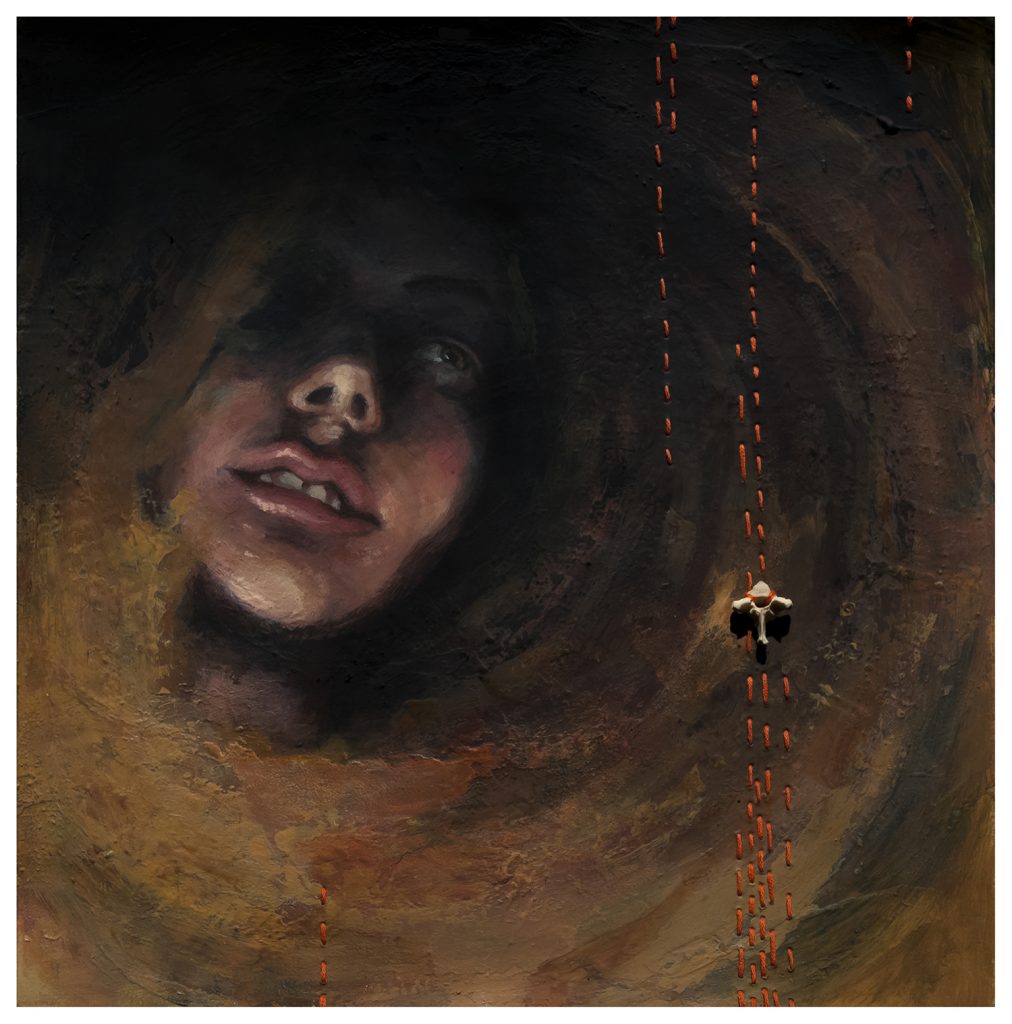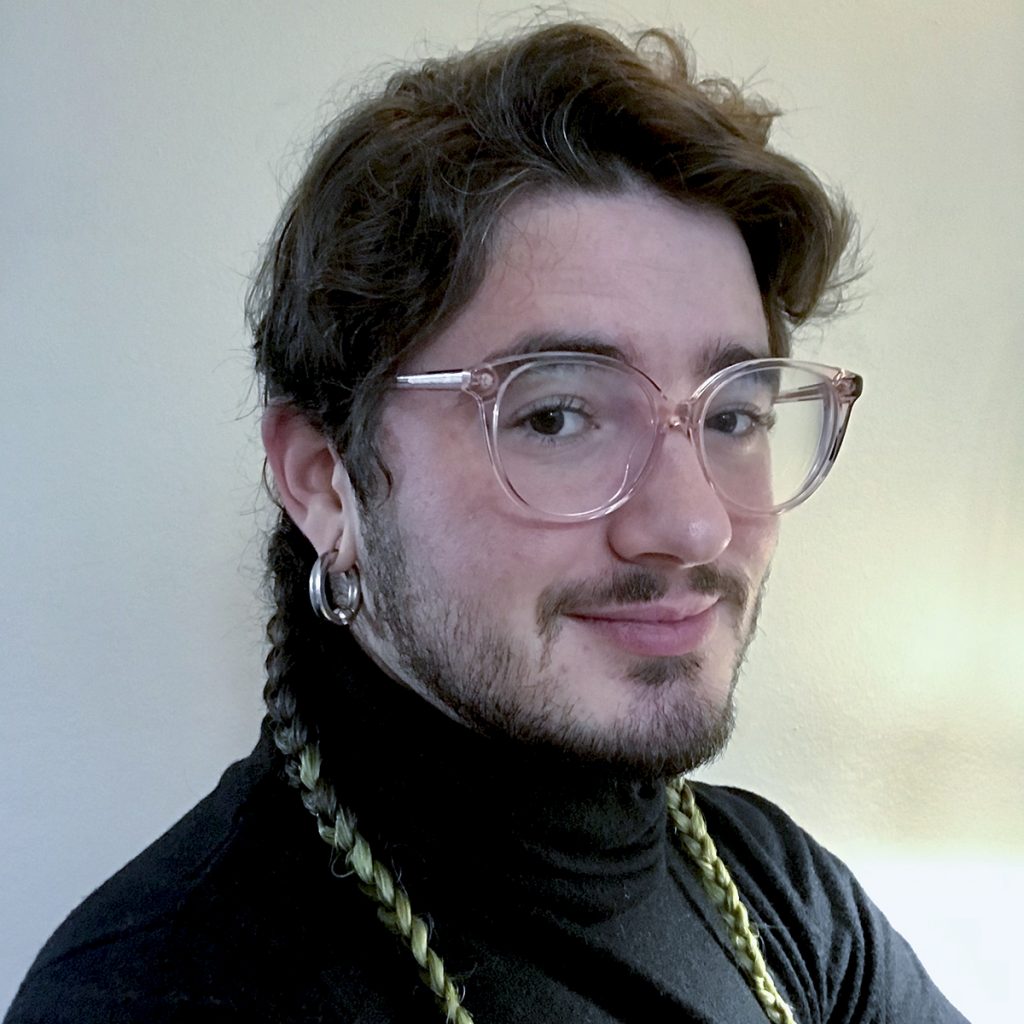The American Art Therapy Association represents a diversity of professionals, students, and organizations across the nation. We recognize and celebrate the work of our members at all levels through our Featured Member series. During National Native American Heritage Month 2021 (November 1-30), we are spotlighting members of the Native American community.
November 18, 2021
What does Native American Heritage Month mean to you? How do you use art to honor your culture or heritage?
My Muscogee great-grandmother spoke of and passed on very little of her cultural knowledge; her husband, my great-grandfather, was the son of Russian Jewish immigrants, and he similarly passed on little of his heritage. Isolated from their respective larger communities, they chose assimilation as the safer option for their children. Both Muscogee and Jewish culture were not an overt part of my upbringing; it’s only as I’ve gotten older and met people of similar backgrounds that I recognize how these cultures continue on in my family.
I see Native American Heritage Month as a reminder to seek out the knowledge and traditions that were lost to me or taken from my ancestors, to renew connections with my Muscogee heritage, and to renew connections with my family, who remind me that I am as much Muscogee as they are. Additionally, this is a reminder to respect the tribes on whose land I live. One way I do this is by participating in Real Rent Duwamish, giving a monthly rent to the Duwamish Tribal Services in support of their work and their fight for federal recognition.
What have your experiences been like doing art therapy with Native American populations? Do you think those clients would have had access to art therapy if you weren’t available?
In a way, my lack of/disconnect from Muscogee traditions has been an advantage! I live and work on Duwamish and Snoqualmie lands; Coastal Salish traditions are different from the traditions of the Muscogee and other historically Southeastern tribes. I approach the cultural background and traditions of every client with the same curiosity that I do my own. I would no more assume that a Snoqualmie tribe member has the same beliefs as my Muscogee tribe, than I would assume that a Mizrahi Jew has the same experience that I do as an Ashkenazi Jew.
Many clients I work with already use their preferred creative outlet in a therapeutic manner, whether or not they recognize it. As an art therapist, I can guide the client through, and offer insight into, the psychological and neurological processes of their experiences, their personal reality of art as therapeutically transformative.

“Rich Forest of Breath & Burrow,” by Beckett Weeks. Acrylic paint, embroidery floss, animal vertebra. 2019. Artist statement: “This work was done as part of Push/Pull gallery’s “Stanza: Fire” show, in which each artist was assigned a poem and instructed to create work inspired by the poem.”
In what ways does attending a predominantly white institution (PWI) affect your art therapy training? Are there systems in place to address diversity and make transformative changes?
I was fortunate to attend a graduate program that centered multicultural understanding and intersectionality. Yet, even in that progressive setting, there were few students who were Native and/or people of color. The extensive, specialized, and expensive education required of our profession remains at odds with the disenfranchisement and lack of generational wealth in communities of color. In addition to financial assistance from the Muscogee Nation, Antioch awarded me a scholarship for Native students. While an individual institution can attempt to address disparities within their own program, it is not capable of rectifying generations of disadvantages.
The emphasis my program placed on multicultural understanding has illuminated how easily appreciating or learning from different traditions can turn into appropriating them, prising them out of their full cultural context. Art therapy research and practice is not free from this, as seen by the ubiquity of the term “Mandala” and Jung’s Archetypes.
There are many communities fighting for long-overdue justice, how have you incorporated intersectionality in your advocacy and practice?
Working with youth gives me the opportunity to be a nonjudgmental adult in the client’s life. Adolescence is the period when many people begin to differentiate their own beliefs from the beliefs they grew up with, and therapy offers an environment for youth to sort through their ideas on topics considered “taboo.” I reflect the emotional intensity of their experiences with bigotry, and approach their assumptions/biases with curiosity.
I am open with clients about their diagnoses, and the sociocultural history associated with DSM diagnoses. I recognize the power-differential created by my position as a “gatekeeper,” and discuss it with clients. I am willing to challenge clients’ beliefs, when therapeutically appropriate, and I am willing to self-disclose, when therapeutically appropriate.
Beckett Weeks, MA
 Beckett is a queer, transgender man, born and raised in Texas, now living and working in the Pacific Northwest. Beckett’s parents are possibly the only parents in the world to be disappointed that their son chose to drop out of art college and be a therapist instead. Beckett received his Bachelor’s in Psychology from the University of North Texas, and his Master’s in Clinical Mental Health Counseling and Art Therapy from Antioch University. Beckett enjoys painting, making comic books, loom weaving, embroidery, cross-stitch, and watching horror movies. He lives with his partner, a cat, two snakes, one newt, and an unknown number of aquatic snails.
Beckett is a queer, transgender man, born and raised in Texas, now living and working in the Pacific Northwest. Beckett’s parents are possibly the only parents in the world to be disappointed that their son chose to drop out of art college and be a therapist instead. Beckett received his Bachelor’s in Psychology from the University of North Texas, and his Master’s in Clinical Mental Health Counseling and Art Therapy from Antioch University. Beckett enjoys painting, making comic books, loom weaving, embroidery, cross-stitch, and watching horror movies. He lives with his partner, a cat, two snakes, one newt, and an unknown number of aquatic snails.
